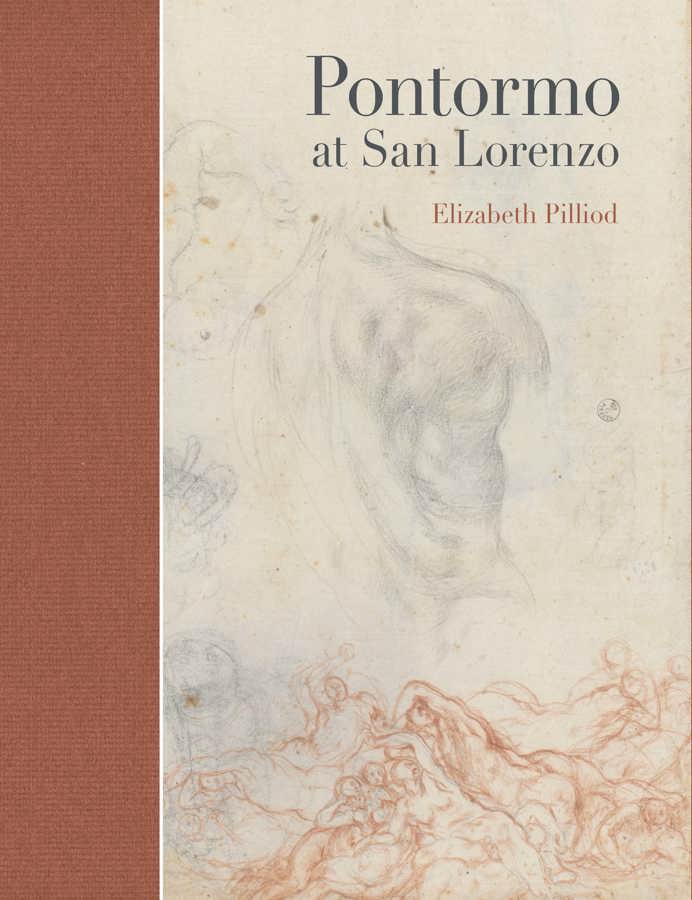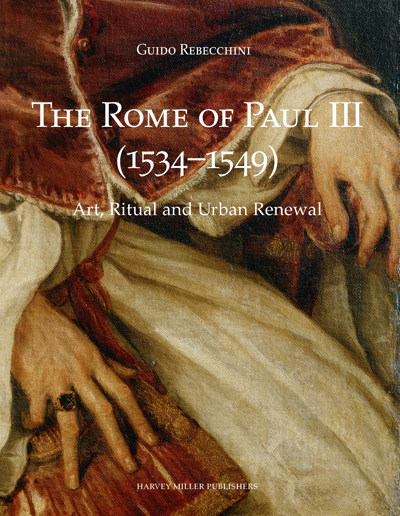
Pontormo at San Lorenzo: Art, History, Ritual
The Making and Meaning of a Lost Renaissance Masterpiece
Elizabeth Pilliod
- Pages: 384 p.
- Size:225 x 300 mm
- Illustrations:58 b/w, 90 col., 2 tables b/w.
- Language(s):English, Italian
- Publication Year:2022
- € 125,00 EXCL. VAT RETAIL PRICE
- ISBN: 978-1-909400-94-8
- Hardback
- Available
This book completely revises and corrects the standard interpretations and understanding of Jacopo da Pontormo's lost masterpiece, the frescoes in the choir of the church of San Lorenzo at Florence, Italy.
“(…) Elizabeth Pilliod, hat ein wunderbar ausgestattetes Buch einer der grossten Fehlstellen der Renaissancemalerei gewidmet: demi m 18. Jahrundert zerstorten Freskenzyklus Pontormos im Chor von S. Lorenzo in Florenz.” (Kunst Chronik, 76/3, 2023, p. 143)
"The book’s central claims about the images in the work itself, their significance, and their unjust disparagement are convincing. The book successfully rehabilitates Pontormo’s frescoes and convincingly shows that clearly the work was within the lines of accepted faith and acceptable enough to its patrons. (...) All art historians of the period should read this book, while it is hoped that its reconstructions can help if not all then at least some visitors to San Lorenzo imagine a very different space than the current blank walls of the choir." (Brian Jeffrey Maxson, in Renaissance and Reformation/Renaissance et Réforme, 47(3), 2024, p. 273)
"The first thing that strikes anyone who picks up Elizabeth Pilliod’s new book is its heft. With thick, glossy pages and rich images, Pontormo at San Lorenzo: The Making and Meaning of a Lost Renaissance Masterpiece feels like a work of substance (and it is) (...). Anyone interested in Pontormo, sixteenth-century Florence, the patronage of Cosimo I de’Medici, or the complex interactions among art, the liturgy, and relics will find much to appreciate in Pilliod’s courageous book." (Steven J. Cody, in College Art Association Reviews, published online, 25 August 2025)
Elizabeth Pilliod, Rutgers University-Camden, is the author of Pontormo, Bronzino, Allori: A Genealogy of Florentine Art; Italian Drawings: Florence, Siena, Modena, Bologna; Drawings in Swedish Public Collections 8; numerous articles on 16th century Florentine art; and co-editor of Time and Place. Essays in the Geohistory of Art. She has been a Fellow at Villa I Tatti, the Harvard Center for Italian Renaissance Studies in Florence and a NEH stipend recipient.
Pontormo’s frescoes in San Lorenzo were the most important cycle of the sixteenth century after Michelangelo’s Sistine frescoes. They had an enormous impact on artists until their destruction in the eighteenth century, and their interpretation has also had a significant bearing not only on the reception of this artist, but also of late Renaissance art in Florence.
Based on archival and historical research, this book determines a new date for the inception of the fresco cycle and reconstructs the day-by-day activity in the church that had an impact on Pontormo’s project. It reveals Pontormo’s painstaking working method. The new reconstruction corrects the visual order of the frescoed scenes, and conclusively demonstrates the orthodoxy of the choir’s iconography. It sets them into the artistic and architectural context of the church of San Lorenzo, relating them to works of art by Fra Bartolomeo and Michelangelo, as well as to complex liturgical and religious functions. This study establishes the intentions of the Medici and the canons of the church in having Pontormo paint the specific space in the church where he painted, and the specific subjects that were included. Finally, it reveals the unsuspected impact Pontormo’s paintings had on other works of art.





